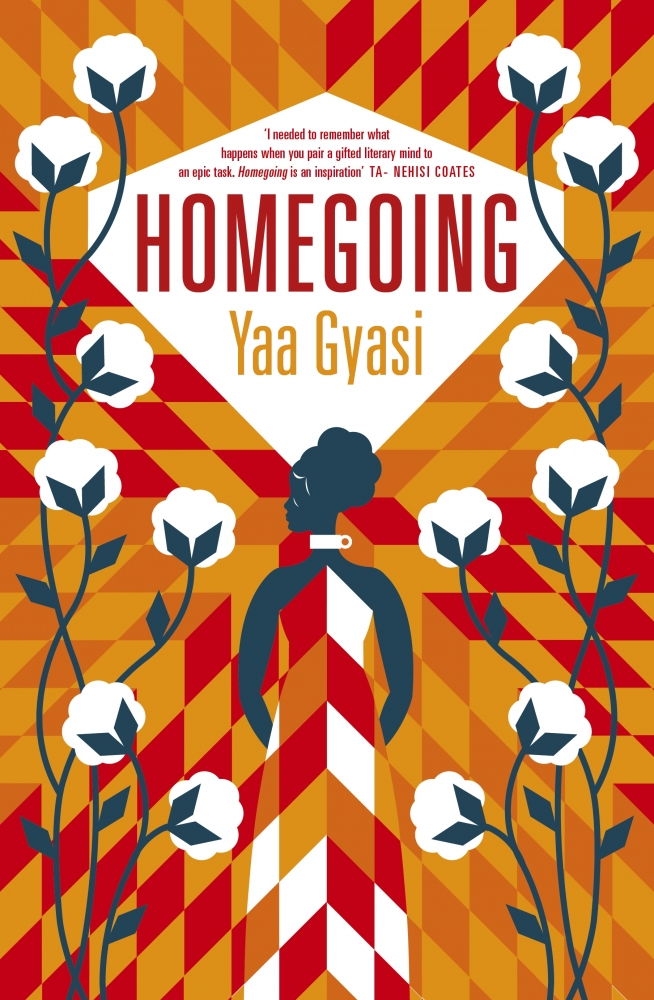Homegoing
By Yaa Gyasi

Blurb
Effia and Esi are born into different villages in eighteenth-century Ghana. Effia is married off to an Englishman and lives in comfort in the palatial rooms of Cape Coast Castle.
Unbeknownst to Effia, her sister, Esi, is imprisoned beneath her in the castle’s dungeons, sold with thousands of others into the Gold Coast’s booming slave trade, and shipped off to America, where her children and grandchildren will be raised in slavery.
One thread of Homegoing follows Effia’s descendants through centuries of warfare in Ghana, as the Fante and Asante nations wrestle with the slave trade and British colonization.
The other thread follows Esi and her children into America. From the plantations of the South to the Civil War and the Great Migration, from the coal mines of Pratt City, Alabama, to the jazz clubs and dope houses of twentieth-century Harlem, right up through the present day, Homegoing makes history visceral, and captures, with singular and stunning immediacy, how the memory of captivity came to be inscribed in the soul of a nation
Our Review
I had very mixed feelings about this book mostly because I intensely dislike books written in an interrupted narrative style. I found several times that I had read a few sentences of the next story before I even realised it had changed.
This book was very intense, certainly not one I would choose for a bit of late reading. Having said that, I found the content of this novel very interesting on the whole but I did lose myself somewhere in the middle.
The individual stories were both fascinating and a harrowing account of the effects of slavery on not only their slaves but also generations down the line. The individual stories contained within deal with slavery, racism, prejudice and numerous social injustices.
Initially the story focuses on two half-sisters Effia and Esi and how their differing upbringings brought about differing life circumstances for both them and their ancestors. Effia marries a British slaver by the name of James Collins and Esi is sold into slavery.
On the night Effia was born fire was raging through the woods outside her father’s compound in the heart of Fanteland . It lived off air, it slept in caves and hid in trees.
When Effia wouldn’t feed and the Baaba had no milk the villagers began to say Effia was born of fire
.
When Baaba let Effia hold her baby brother for the first time Effia accidentally dropped him. In retaliation Baaba
“lifted her stirring stick and beat Effia across her bare back. Each time the stick lifted off the girl’s body, it would leave behind hot sticky pieces of banku that burned into her flesh. By the time Baaba had finished, Effia was covered with sores, screaming and crying…And so the cycle began. Baaba beat Effia. Cobbe beat Baaba. By the time Effia had reached age ten, she could recite a history of the scars on her body.”
One of the things which comes up several times in this book is the way language helps to reinforce negative images. Since moving to the castle she’d discovered that only the white men talked of ‘black magic.’ As though magic had colour.
Effia is used to everything being everything and doesn’t understand why the white men label certain things as ‘good’ or ‘bad’ and ‘black’ or ‘white.’
Esi originally thinks that a mistake has been made when she is sold into slavery but she soon learns it is a punishment. During her time in captivity Esi comes to the conclusion that, white men smiling just meant more evil was coming.
From the details of slavery, to lynching, from the unjust nature of the prison system to job opportunities this book deals with some uncomfortable truths.
As the author says,
“History is storytelling.” The one with the power is the one who is believed but what about those whose voices were suppressed? You need to look at things from all sides in order to find the truth.
This is a central theme running through the book and throughout the history of slavery.
Our Final Rating...
Read & Shared 358 Times.



Get In Touch
Please feel free to leave a comment to this book review below. Or even leave your own review if you like.
If you run a blog and/or have posted a review to this book, a Q & A or general author interview online you can always add a trackback to it here and following moderation we'll add a link to it below.